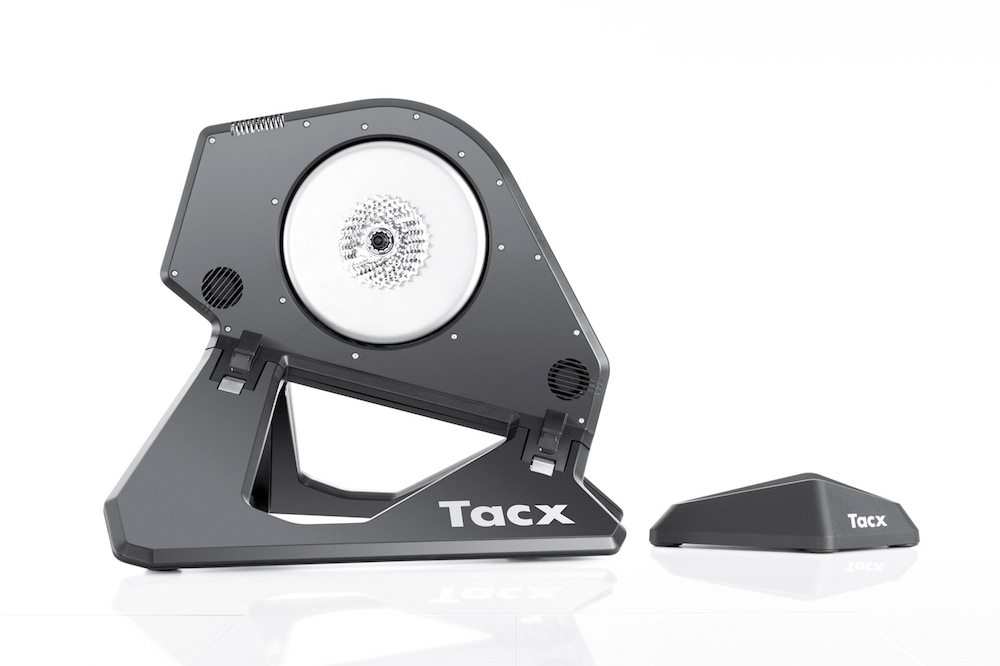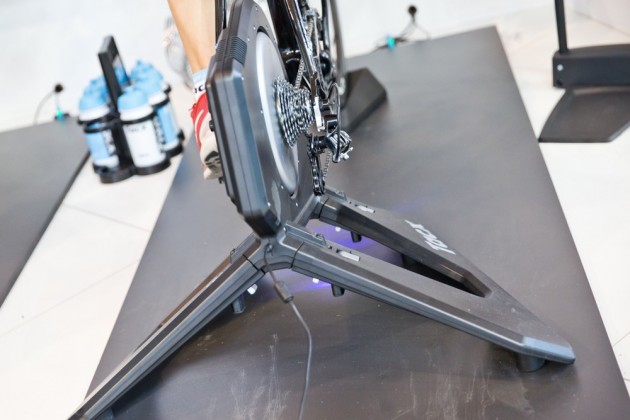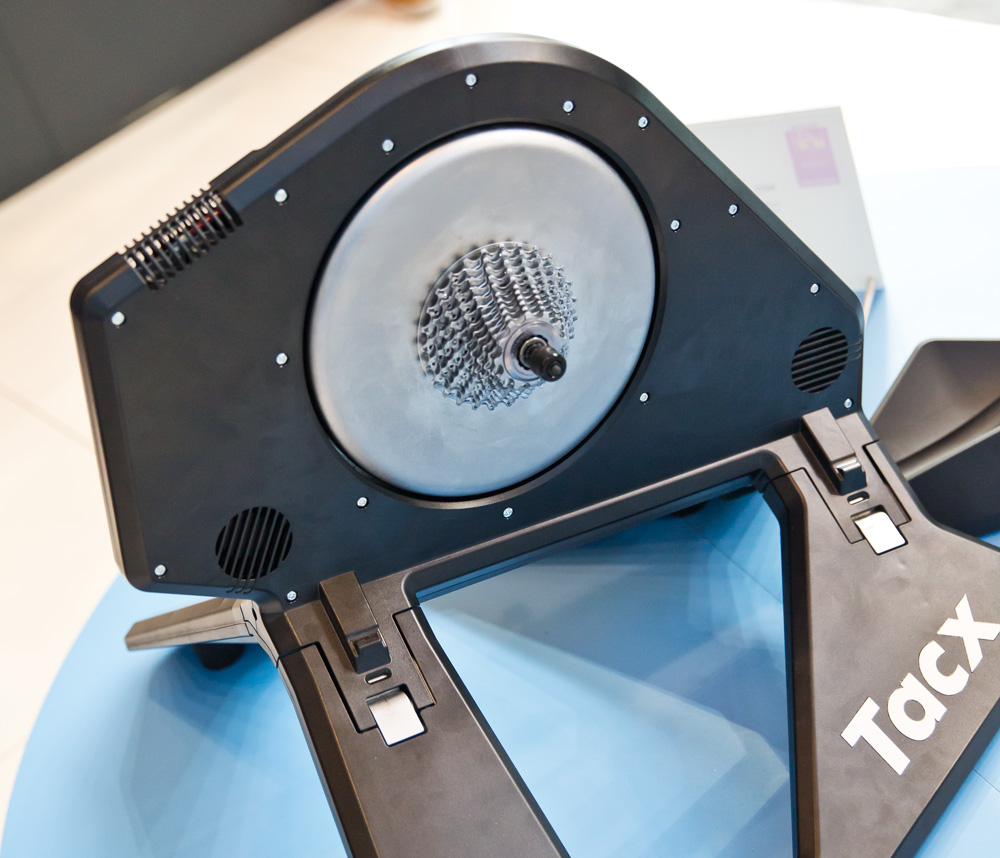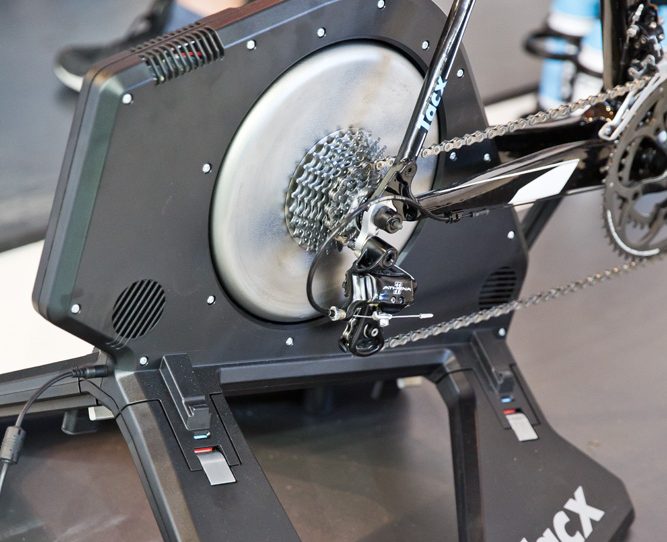Tacx Neo Smart turbo trainer review
The Tacx Neo Smart direct drive trainer is one of most sophisticated available, though it is one of the most expensive and has a very large footprint

The Tacx Neo Smart is a great piece of hardware that has a really realistic ride feel and is fairly quiet, though the added feel of the 'road surface simulation' on Zwift means it isn’t the quietest we’ve tested overall. If a realistic feel is important to you, then this is a great option. The Tacx Neo is sophisticated but the likes of Wahoo, CycleOps and Elite have caught up now.
-
+
Quiet
-
+
Can work without being plugged in
-
+
Accurately simulates descents and ascents
-
+
Stable platform
-
-
Expensive
-
-
Possible to trap fingers when unfolding and awkward to carry
-
-
Large footprint
-
-
Adapters not included
You can trust Cycling Weekly.
The Tacx Neo was a few years ago the best smart turbo trainer you could buy. It came with 'the best turbo trainer money can buy' price tag too. However, the likes of Wahoo, CycleOps and Elite now produce some decent competition for it for less money – all direct-drive, smart turbos too.
Direct-drive turbos currently offer the most realistic road feel compared to wheel-on trainers. The downside, however, is that they are generally more expensive, mainly for being 'smart' trainers offering power readings and being controllable by programs like Zwift.
Included with the Tacx Neo is a front riser block, power socket and transformer, Edco lockrings and a quick release skewer. Tacx's website has a list of compatible bikes if you are wondering.
Out of the box, the Tacx Neo offered quite a tricky setting up procedure especially in the small space I had to put my bike and trainer. Folding down the legs isn’t as simple as it sounds, especially when you add the smart turbo’s 22kg weight into the mix.
>>> Wheel-on vs direct drive turbo trainers
That means when folding this beast away you can frequently catch your hands or have a sudden drop of weight on you while hunched down. The release clips are at the bottom and if you release one side the Tacx Neo has a habit of falling to one side or release both and you've got a huge weight to bear until you try and softly place it down.
Other competitors like the CycleOps Hammer are better in this regard and so is the Wahoo Kickr, which is much easier to manoeuvre.
At this point, anyone with a thru-axle bike or a bike with disc brakes will be left scratching their head as the Neo doesn’t ship with the converter needed to make it compatible, which stings a bit considering the price of the unit.
Watch: Turbo trainer buyer's guide
Also annoying, and unlike the Wahoo, the Tacx doesn’t come with a cassette, which will be a frustration for those who don’t have the tools to fit one.
Fortunately, the Tacx Neo freehub is Edco, meaning that it is both Campagnolo and Shimano/SRAM compatible, unlike the Wahoo Kickr, which is just Shimano/SRAM compatible out the box - unless you order a separate cassette body and swap them over. The transformer for the Tacx Neo is dual voltage, meaning it works in any region too, which is useful if you want to take it abroad.
>>> Zwift vs Peloton: which is best for your at-home workouts?
The turbo’s heft means it won’t be leaving my living room anytime soon, but compared to the likes of the Wahoo it is pretty similar in terms of weight but does weigh a fair amount more than Elite Drivo II. Its footprint measures 750 x 575mm, which makes it bigger than its Wahoo equivalent. However, it’s smaller than the Elite Drivo II and once folded away it’s quite slim and sits nice and flush against the wall out of the way.
Like the Wahoo Kickr, the Tacx Neo is very quiet making it ideal for those who have thin walls or shared living. Having tested both, the Wahoo is slightly quieter I'd say. Mainly because of the Tacx's 'road surface simulation', which replicates cobbles or wooden slats that you come across on the Zwift platform. It is noisier and rather annoying but without that feature there wouldn't be much between the two turbos.

A nice feature of the Tacx Neo is you can use it when it's not plugged in. Pedal for a few seconds and it turns itself on using a dynamo, albeit with reduced functionality, something which makes it very useful for taking to races and warming up on. By comparison, the Kickr has to be plugged in for use.
Once plugged in, you can make use of the Tacx Neo's full hardware features, controlling it in the iOS or Android apps available for smart phones and tablets. I used the iPhone app, which allowed me to manually control the both the slope from -5 per cent to 25 per cent. In addition to this you can set a specific wattage to ride to.x
This is really useful if you want to do an interval at a specified wattage – you just concentrate on turning the pedals and the Tacx Neo will adjust the resistance to match your chosen cadence. I really like this setting as it means you can watch a film and not have to stare at the numbers constantly.
The Wahoo Kickr can also perform this ergo function too. I have found the Wahoo software to be better than Tacx's, particularly when trying to export ride data into Training Peaks or Strava.

Accuracy is good: compared with on-bike power meters, readings remained constant. Pedal-based power meters like the PowerTap P1s or the crank-based system like the Quarq DZero will not include drivetrain wastage, which will be around four or five watts lost compared with the Tacx Neo reading – and that showed.
When doing high-power efforts the power readings were consistent too, a good sign of reliability and durability of the unit.
The Neo, unlike any other turbo we've tested, is self-calibrating. This means that you don't have to perform a zero offset like you do with many power meters and turbo trainers. Wahoo for example will want you to complete a weekly spin-down test to ensure correct calibration.
Bluetooth and ANT+ connectivity means you can connect the trainer wirelessly with your computer or phone and ride along downloaded courses or complete training sessions. That of course also allows you to use third party apps such as Zwift.

Having used the Tacx Neo with Zwift, the unit adjusts the resistance to simulate what is happening on screen, and is brilliant at simulating the changing gradients, recreating the feel of anything between a 20 per cent uphill slope to a -5 per cent downhill slope. If virtual reality training is your thing, then this is a superb tool.
Ultimately, the Tacx Neo was once was the market leader, but the likes of Elite, CycleOps and Wahoo have now come to the fore and provide equal performance with better compatibility at a cheaper price too.
However, the Tacx Neo remains one of the better ones for riding and that large flywheel offers good ride quality.

Thank you for reading 20 articles this month* Join now for unlimited access
Enjoy your first month for just £1 / $1 / €1
*Read 5 free articles per month without a subscription

Join now for unlimited access
Try first month for just £1 / $1 / €1
Get The Leadout Newsletter
The latest race content, interviews, features, reviews and expert buying guides, direct to your inbox!
Symon Lewis joined Cycling Weekly as an Editorial Assistant in 2010, he went on to become a Tech Writer in 2014 before being promoted to Tech Editor in 2015 before taking on a role managing Video and Tech in 2019. Lewis discovered cycling via Herne Hill Velodrome, where he was renowned for his prolific performances, and spent two years as a coach at the South London velodrome.
-
 What does Q36.5 mean? We asked the people behind the Italian kit brand that sponsors Tom Pidcock's team
What does Q36.5 mean? We asked the people behind the Italian kit brand that sponsors Tom Pidcock's teamQ36.5's Luigi Bergamo and Lodovico Pignatti Morano take on Cycling Weekly's Q&A
By Tom Thewlis Published
-
 'If I were a tennis player then my career would be over': Remco Evenepoel contemplated early retirement after serious training accident
'If I were a tennis player then my career would be over': Remco Evenepoel contemplated early retirement after serious training accidentDouble Olympic champion was left with nerve damage and says his shoulder is not yet fully healed ahead of his return to racing at Brabantse Pijl
By Tom Thewlis Published
-
 'It can really push me along' - How a velodrome comeback is making Caleb Ewan faster on the road
'It can really push me along' - How a velodrome comeback is making Caleb Ewan faster on the roadAustralian says he'll "definitely" continue track work after rekindling passion
By Tom Davidson Published